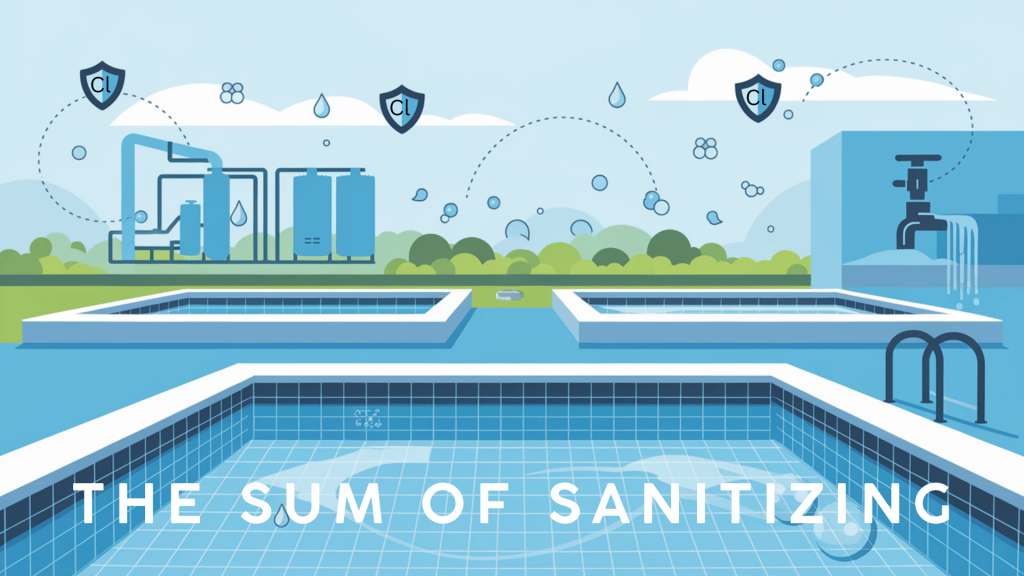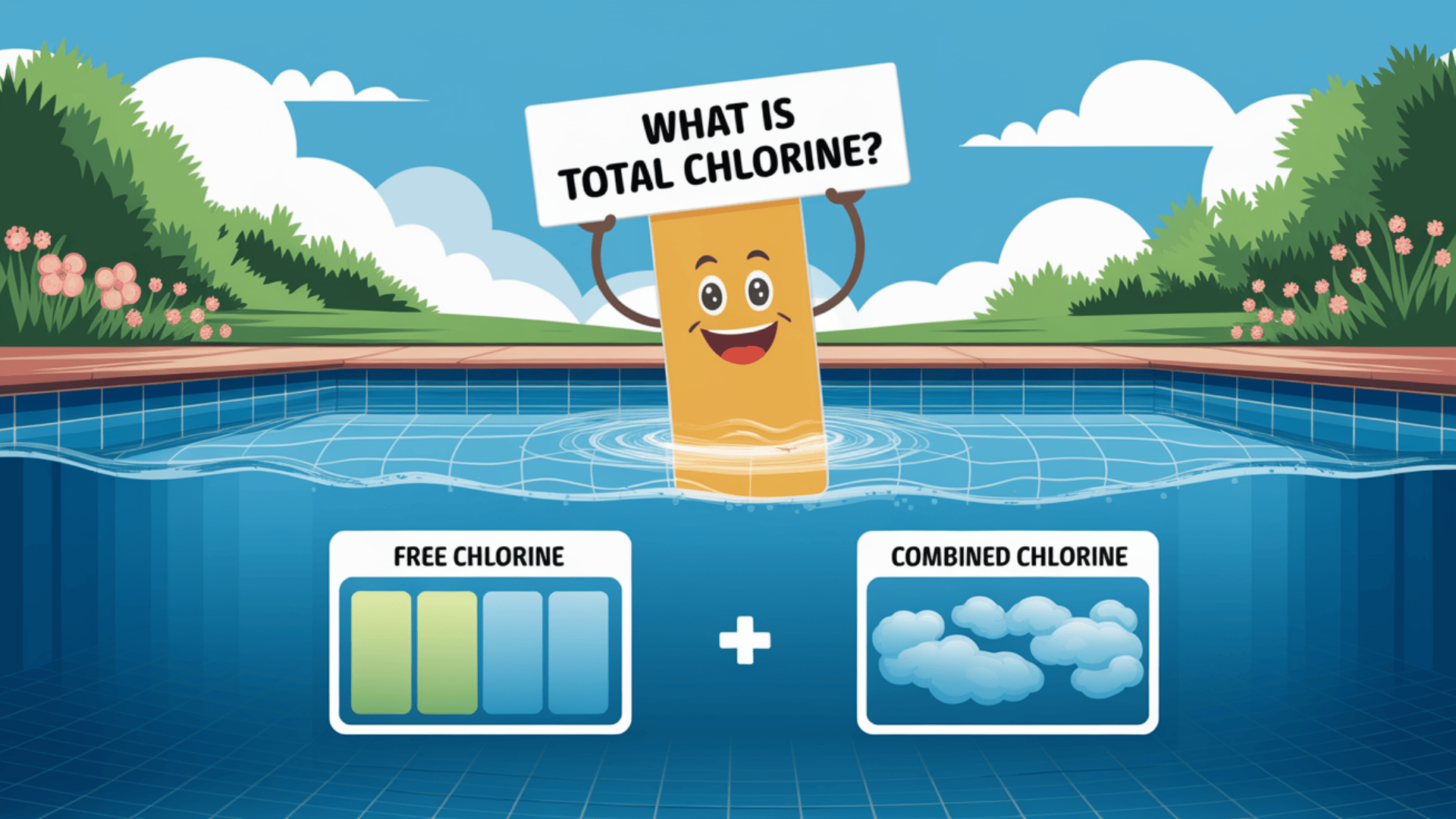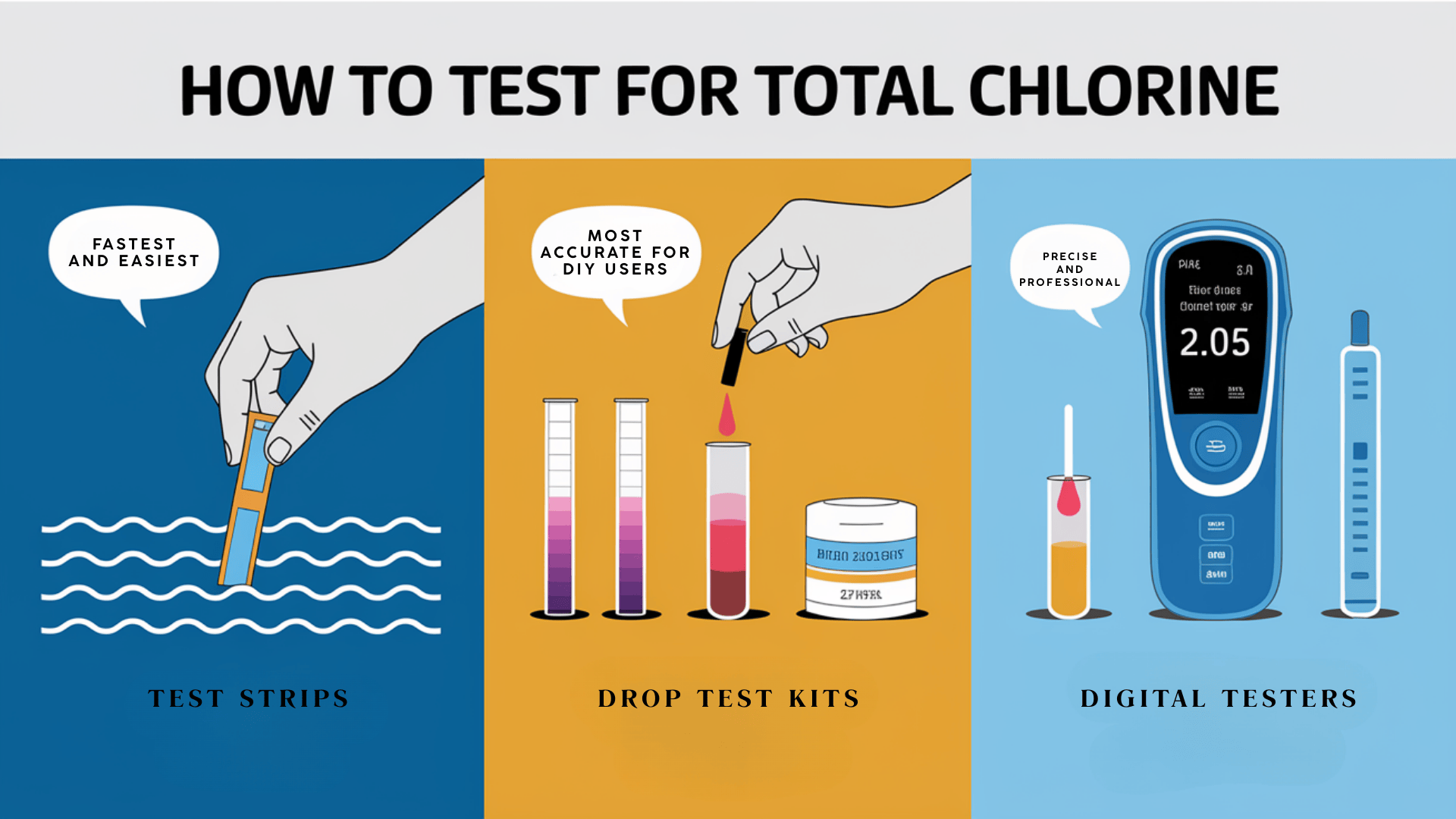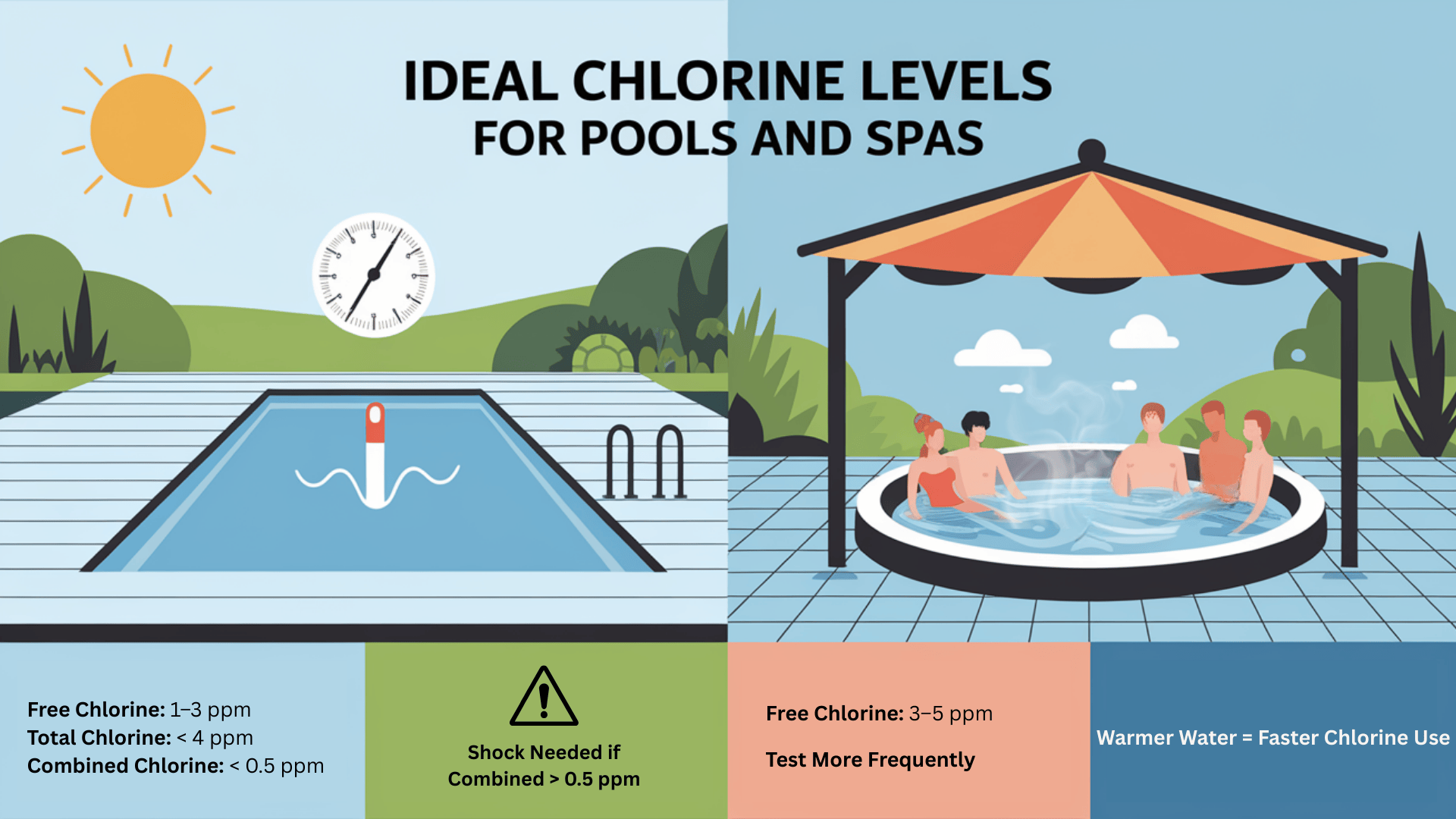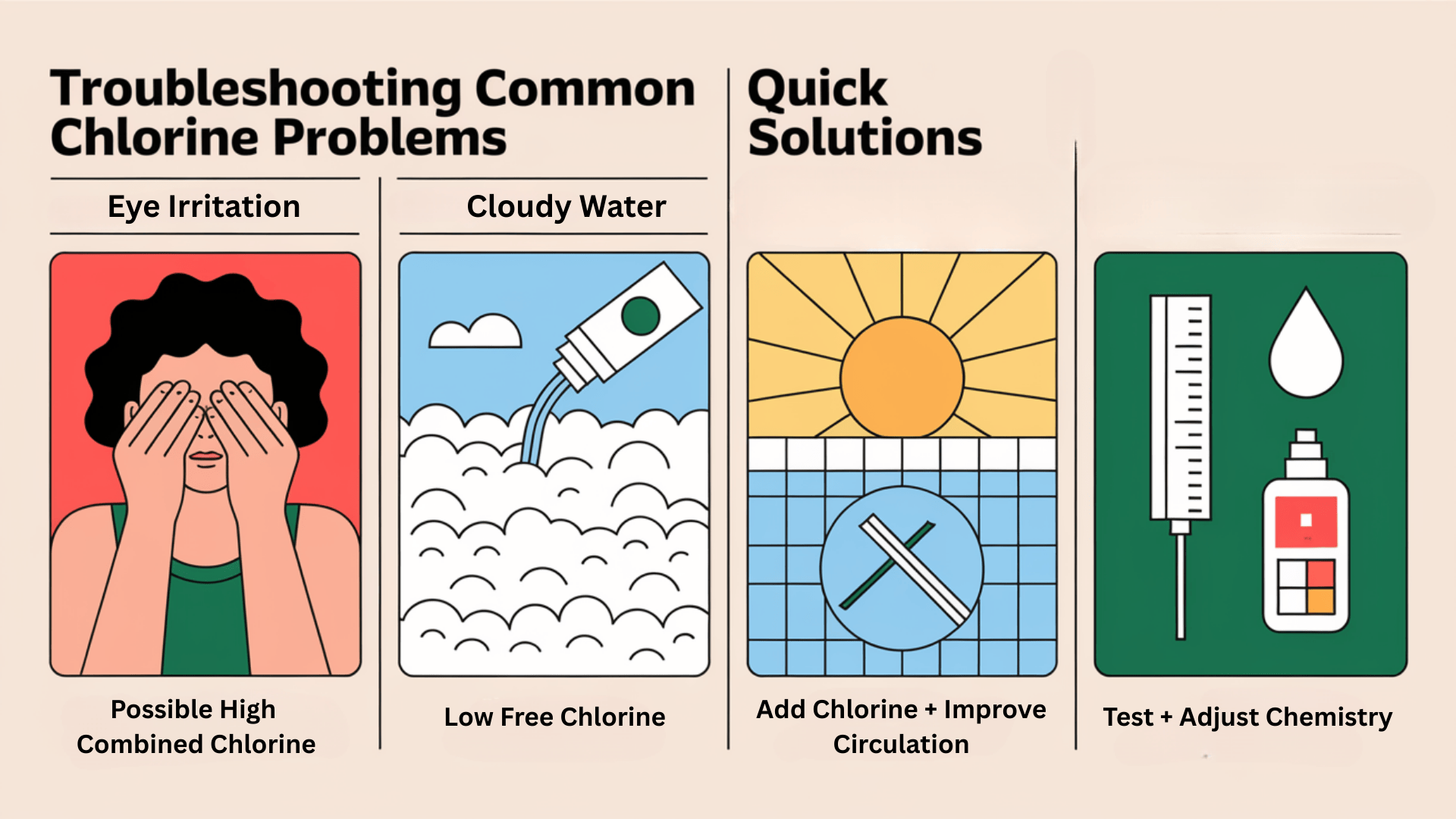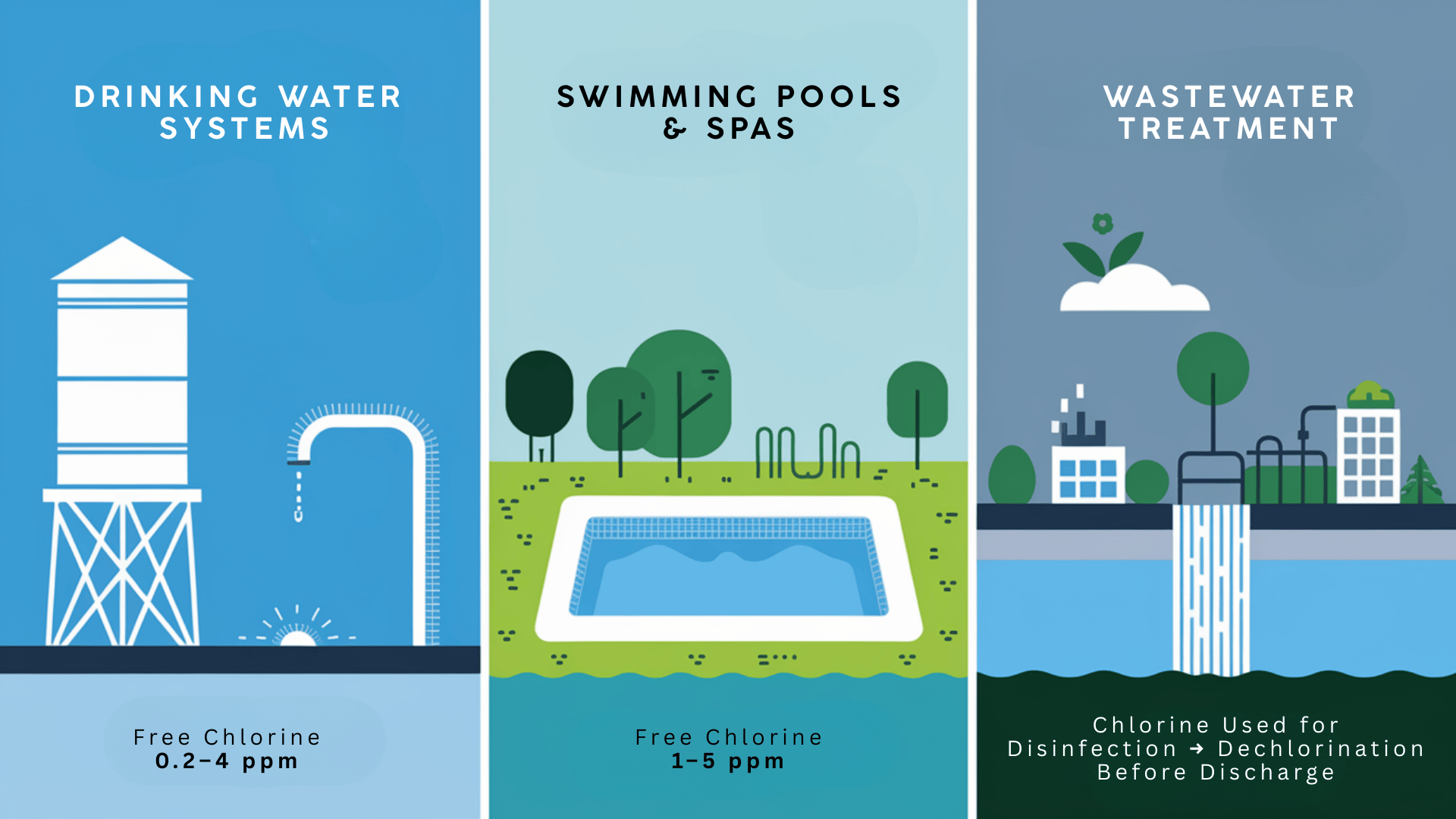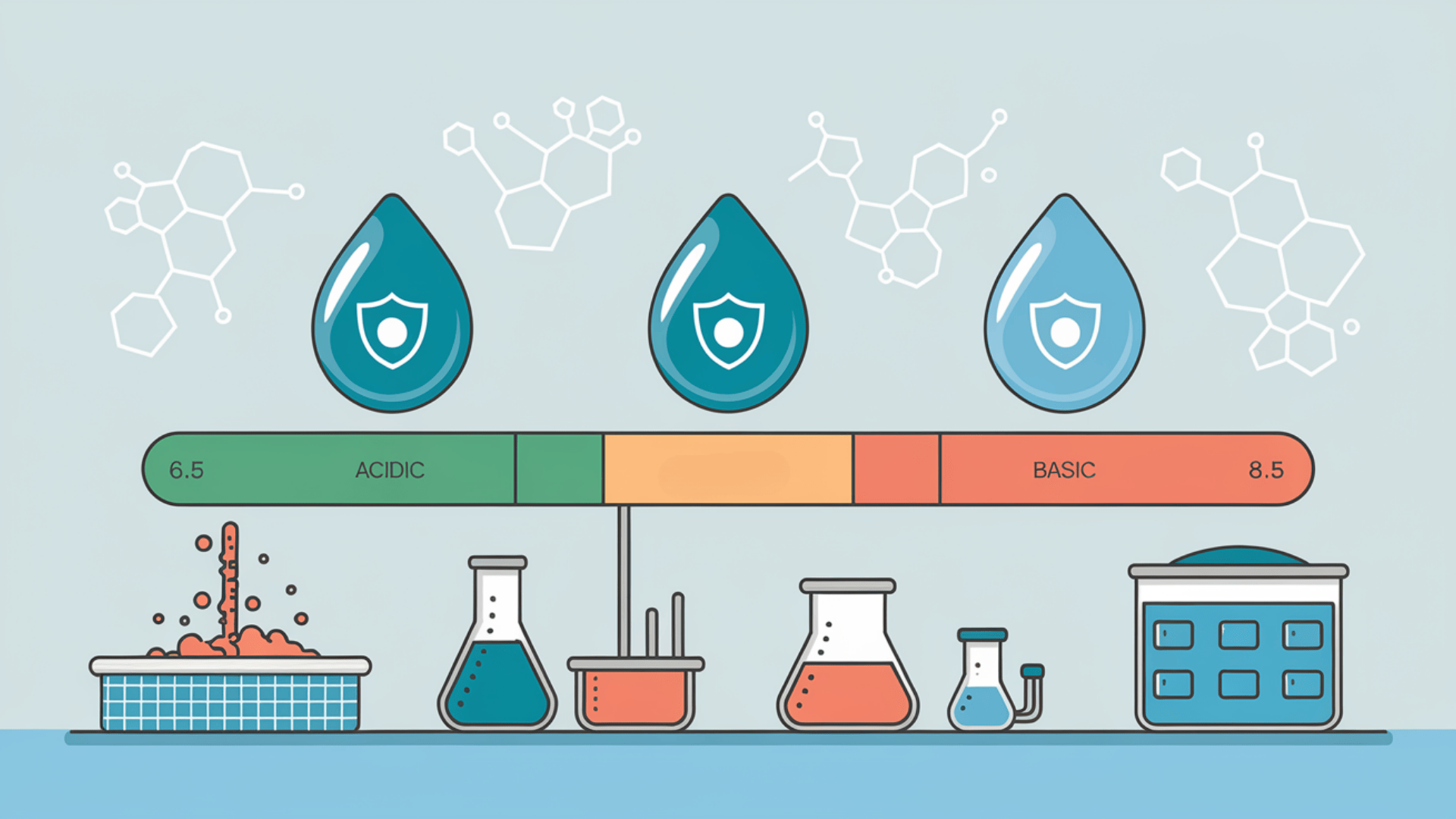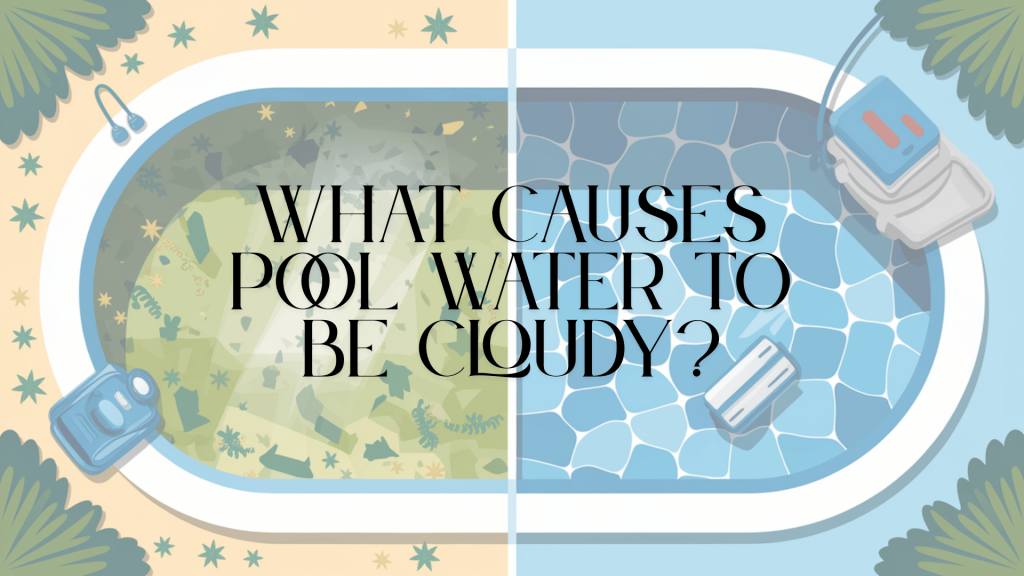Ever wondered why some pools smell strongly of “chlorine” while others have no scent at all? The answer lies not in the amount of chlorine present, but in its type.
Total chlorine—a key measurement for pool owners—reveals the true story of your water’s health. Many people mistakenly blame irritated eyes and strong odors on “too much chlorine” when the opposite is often true.
The science behind clean, comfortable water isn’t complicated, but those who master it enjoy crystal-clear pools without the chemical hassles or expense that plague many pool owners. Looking beyond what you can see to understand what’s actually happening in your water gives you power over your pool’s condition.
Ready to master pool chemistry without the confusion? Let’s uncover what total chlorine really means.
Understanding Pool and Spa Water Chemistry
Pool and spa owners understand that maintaining water cleanliness isn’t just about aesthetics—it’s about health and safety. At the heart of water care sits chlorine, a key player in fighting harmful microorganisms.
When discussing pool chemistry, understanding total chlorine is essential for maintaining crystal-clear water. Think of it as a simple math equation:
Total Chlorine = Free Chlorine + Combined Chlorine
But what does this really mean for your pool? Free chlorine actively works to clean your water, killing bacteria and other contaminants. Combined chlorine has already done its job and bonded with those unwanted elements. Together, they make up the total chlorine count in your water.
We’ll break down everything you need to know about chlorine types, testing methods, and how to maintain perfectly balanced water. No chemistry degree required—just straightforward tips for clean, safe water everyone can enjoy.
Total Chlorine Defined
Total chlorine represents the sum of all chlorine forms present in water. When you add chlorine to your pool or spa, it begins working immediately to kill germs and break down waste.
The basic formula tells the story: Total Chlorine = Free Chlorine + Combined Chlorine. Free chlorine actively kills germs, while combined chlorine (also known as chloramines) has already reacted with contaminants and offers minimal sanitizing power.
Water professionals measure total chlorine to obtain a comprehensive picture of the chlorination status. This measurement helps determine whether there is enough active chlorine to keep the water safe, or if too much has been used up fighting contaminants.
Think of total chlorine as your water’s overall chlorine budget. The more combined chlorine you have compared to free chlorine, the less effective your sanitizing system becomes, even when total chlorine readings look good.
The Three Types of Chlorine: Free, Combined, and Total
When maintaining your pool or spa, understanding the different forms of chlorine helps you make better decisions about water treatment. Each type plays a specific role in your water’s health.
Chlorine exists in three primary forms in your water system, each providing different insights into your water quality. Knowing how to interpret these measurements gives you power over your pool’s cleanliness.
Most pool problems stem from imbalances between these different chlorine types. Learning to recognize and address these imbalances saves time, money, and frustration.
The relationship between these chlorine forms determines not just how clean your water is, but also how comfortable it feels to swimmers.
1. Free Chlorine: Your Active Sanitizer
Free chlorine serves as the primary germ fighter in your pool. It hasn’t yet bonded with contaminants, so it actively seeks out and kills bacteria, algae, and other unwanted visitors in your water. Without enough free chlorine, your pool quickly becomes a breeding ground for microorganisms.
2. Combined Chlorine: The Used-Up Sanitizer
When free chlorine performs its job, it binds with contaminants such as sweat, oils, and urine. This creates combined chlorine, also known as chloramines.
These compounds are responsible for the “chlorine smell” that many people notice in poorly maintained pools. Combined chlorine has very little sanitizing power and can irritate skin, eyes, and lungs.
3. Total Chlorine: The Complete Picture
Total chlorine provides a comprehensive view of all the chlorine in your water system. A high total chlorine level with low free chlorine indicates that most of your sanitizer has been used up combating contaminants.
How to Test for Total Chlorine
Keeping your water safe starts with knowing exactly what’s in it. Testing becomes a simple habit that prevents the most common pool and spa problems before they start.
Many pool owners make the mistake of estimating chlorine levels based on the appearance or smell of the water. This approach often results in the wastage of chemicals and unsafe swimming conditions.
The small investment in proper testing tools pays off through reduced chemical usage and fewer water problems. Most testing methods can be performed in under a minute.
Learning to test your water correctly is one of the most important skills any pool or spa owner can develop. It removes the mystery from water care, putting you firmly in control.
1. Test Strips
Test strips offer the quickest way to check chlorine levels. Dip a strip into your pool water for about 15 seconds, then compare the color changes to the chart on the package.
Most strips test for both free and total chlorine, allowing you to calculate combined chlorine by subtracting the total chlorine from the free chlorine.
2. Drop Test Kits
Drop kits provide more accurate readings than test strips. These kits use chemical reagents that change color when mixed with pool water.
The DPD (diethyl-p-phenylene diamine) test is most common, using separate reagents for free and total chlorine.
3. Digital Testers
For the most accurate home testing, digital photometers measure the exact light transmission through your water sample after adding reagents.
While more expensive than strips or drop kits, these devices remove the guesswork of color matching and provide precise digital readings.
Ideal Chlorine Levels for Pools and Spas
Finding the sweet spot for chlorine keeps your water both safe and comfortable. Too little won’t protect swimmers from germs, while too much can cause irritation and damage to equipment.
Different water vessels have varying chlorine needs, depending on their size, temperature, and usage patterns. What works for a cool, large pool won’t necessarily work for a hot, small spa.
Weather conditions and swimmer load significantly impact how quickly chlorine is used up. Hot, sunny days or pool parties require more frequent monitoring and adjustments.
Maintaining proper chlorine levels isn’t just about safety—it also extends the life of your equipment and reduces the need for more drastic treatments, such as shocking the pool.
Pool Standards
For standard residential pools, maintain free chlorine between 1-3 ppm. Total chlorine levels should remain below 4 ppm, with combined chlorine levels under 0.5 ppm.
When combined chlorine exceeds this threshold, the water needs to be shocked to break down these compounds.
Spa Requirements
Hot tubs and spas require higher free chlorine levels (3-5 ppm) because the warmer water accelerates chlorine consumption and creates a more favorable environment for bacterial growth.
The enclosed space and higher bather load relative to water volume require more frequent testing and adjustments of levels.
Troubleshooting Common Chlorine Problems
Even well-maintained pools and spas occasionally develop issues related to chlorine. Most chlorine problems fall into predictable patterns with straightforward solutions. Learning these patterns saves time and prevents the frustration of trial-and-error approaches.
Swimmers often provide the first clues to chlorine problems through complaints about skin irritation, eye redness, or strong chemical smells. Take these signs seriously—they indicate real water chemistry issues.
Water appearance changes, such as cloudiness or algae growth, almost always connect back to insufficient free chlorine levels or an imbalance between chlorine types.
Fixing High Combined Chlorine
High combined chlorine levels indicate that your sanitizer has been effective against a wide range of contaminants.
To fix this, test to confirm combined chlorine exceeds 0.5 ppm, then shock the pool with a chlorine product at 10 times the combined chlorine reading. Run the pump for 24 hours to allow thorough mixing, and retest before swimming.
Solving Low Free Chlorine
Low free chlorine leaves your water vulnerable to contamination. Common causes include heavy pool use, which introduces lots of contaminants; rain diluting your water chemistry; hot, sunny weather breaking down chlorine; and poor circulation, preventing even distribution.
Chlorine in Different Water Applications
Chlorine serves as the primary disinfectant across many water systems, but its application varies widely depending on the context. Understanding these differences helps make sense of water treatment as a whole.
Water treatment professionals adjust their approach based on factors like contact time, contamination risk, and end-use requirements. The same principles apply whether treating a small pool or a city’s water supply.
Municipal water systems must strike a balance between effective sanitation and the formation of potentially harmful byproducts. This challenge reflects a larger truth about water treatment: it always involves tradeoffs.
The goals of chlorination shift depending on whether you’re talking about drinking water, pools, or wastewater. Each application prioritizes different aspects of water quality and safety.
Drinking Water Systems
Public drinking water typically maintains free chlorine levels between 0.2-4 ppm, lower than pools because the water isn’t constantly exposed to new contaminants. Many systems use chloramines intentionally because they provide longer-lasting protection as water travels through distribution pipes.
Wastewater Treatment
In wastewater applications, chlorine serves to kill pathogens before treated water returns to natural waterways. Most systems must then dechlorinate the water before release, as even low chlorine levels can harm aquatic ecosystems.
Advanced Topics in Chlorine Chemistry
Beyond the basics lies a fascinating world of chemical interactions that affect how chlorine works in water. Understanding these more complex topics helps solve persistent water problems.
Water chemistry involves a web of interconnected factors. Changing one parameter often affects many others, which explains why simple approaches sometimes fail to fix complex water issues.
Scientific advances continue to enhance our understanding of chlorine chemistry, resulting in improved products and more effective treatment methods. Today’s pool owner has access to solutions that weren’t available even a decade ago.
The chemistry might seem complex, but the goals remain simple: safe, clear, comfortable water with minimal chemical use and maintenance time.
The pH Connection
The effectiveness of chlorine depends heavily on the pH of your water. At higher pH levels (above 7.8), chlorine becomes less efficient at killing germs, sometimes requiring up to three times more chlorine to achieve the same sanitizing effect as properly balanced water.
Alternative Sanitation Methods
While chlorine remains the most common pool sanitizer, alternatives include bromine, salt systems, UV systems, and ozone. Most alternative systems still require some chlorine or other chemical sanitizer to maintain a continuous defense against new contaminants.
The Bottom Line
Maintaining the perfect pool isn’t magic—it’s simply about understanding what’s happening beneath the surface. Now you know that clear water doesn’t always mean clean water, and that strong chlorine smell actually signals a problem, not a solution.
With your new understanding of chlorine types and testing methods, you can identify issues early on before they become problems.
Your pool maintenance routine becomes simpler, more effective, and less expensive when you focus on what matters.
The reward for your attention to water chemistry? A consistently clean pool that’s always ready for swimming, with no red eyes, no irritated skin, and no wasted chemicals.
That’s the power of understanding total chlorine—turning pool care from frustrating guesswork into straightforward science.

